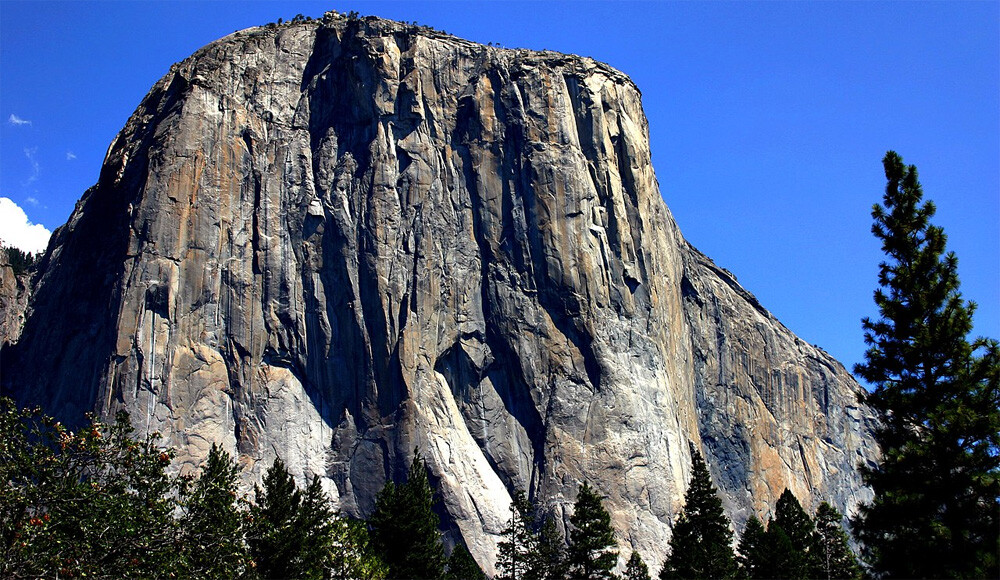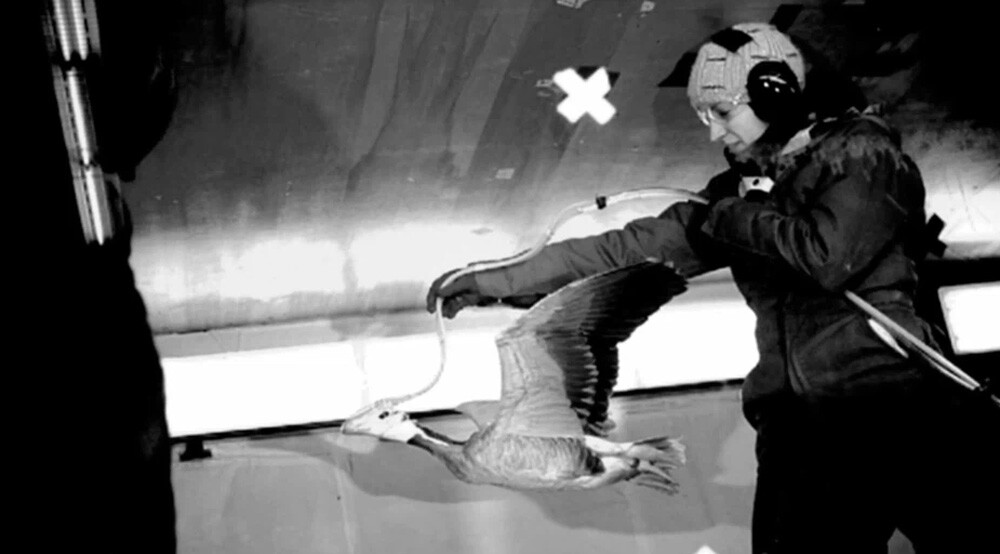5 Animals That Can Do The Impossible

Many natural things seem impossible. The birth of a universe from nothing. The reality-warping singularity of a black hole. Or the combination of inanimate atoms to form sentient, self-perpetuating lifeforms. Ironically, it's this latter, most impossible-sounding aspect that proves "impossible" is sometimes more of a guideline than a rule ...
Komodo Dragon Females Don't Need No Man
In May 2006, a Komodo dragoness named Flora laid an 11-egg clutch at London's Chester Zoo. That in itself was not strange. The strangeness was the identity of the father: none. There was no daddy. It's not like he popped out for a pack of smokes and never came back; there never was a father.
Flora had given birth by parthenogenesis, an asexual reproduction strategy used by some creatures to make offspring without all the hassles of dating and spending a bunch of money at pretentious French boîtes.

Parthenogenesis (parthenos being Greek for virgin) is primarily practiced by organisms lower down the taxonomic ladder, including plants, rotifers, wasps, ants, lizards, and snakes. Among animals worth a damn, only about 70 of backboned species, or 0.1 percent of all vertebrates, are known to possess the powers of parthenogenesis. But Flora blew scientists' minds by being the first K-dragon and the most sophisticated creature to give sex-less birth.
Zoo-tenders knew Flora hadn't been in contact with any of the males. And genetic testing on one of the eggs (no one smashed it or anything, it collapsed on its own) confirmed the fatherless feat.
It was possible because male and female sex cells occur from cell division called meiosis. Female meiosis creates four proto-eggs. One turns into a proper egg, and the others get reabsorbed and turned into poo or fresh scales or whatever. But in Flora's case, one of these normally-reabsorbed proto-eggs ended up fertilizing the egg-egg. And so, Flora became both mother and father.

So why would such independent Komodo ladies need males at all? Because males carry the ZZ sex chromosomes and females the WZ. Therefore, parthenogenesis can only produce WW or ZZ chromo-combos. WW is not viable and creates no kids. So the offspring are all ZZ males. That's why Komodos still need sexual reproduction, lest the sons mate with the mother and quickly create a colony of slack-jawed, drooling inbreds.
And if you're wondering, the children are not the mother's clones for multiple reasons. First, genes have different forms or alleles. Also, some genetic jumbling occurs during the egg production phase. Additionally, the egg only provides half the mother's genes, while the other half typically comes (hehe) from the sperm. For Flora, her half-set of chromosomes doubled up. This also solves a theological enigma, combining genomics and Judeo-Christo ideology to explain why Jesus would not have been a clone of Mary.
The Little Desert-Dwelling Kangaroo Rat Doesn't Need To Drink Water
The subterranean-living kangaroo rat is a critter that's neither rodent nor, perhaps obviously, kangaroo. But a somewhat-gopher-related oddity and evolutionary Swiss army knife, packed with lots of neat evolutionary features despite its diminutive form. Including one super-useful survival quirk for desert habitation: it doesn't need to drink water.

Instead of drinking, it derives all the hydration it needs from its diet of seeds, extracting up to half a gram of aqua per gram of seed. Sometimes, it stores the seeds underground in its burrow so they can absorb extra moisture. The kangaroo rat also conserves much of its water because its kidneys produce some of the least-urinous urine in existence, excreting pee of an "almost crystal-like consistency."
These little guys are only a few inches long and weigh as much as a granola bar. Therefore, they, unfortunately, sit pretty low on the local food pyramid and are predated by just about every bird, reptile, and mammal that prowls the barren wilds of America's western and southwestern regions.

Taking pity on its tiny, hapless charge, Mother Nature equipped it with a superb sense of hearing, capable of detecting even the biome's most silent assassin: the owl. And, should the kangaroo rat find itself cornered by some deadly desert denizen, an annoying ex, or religious solicitor, it can use its large back feet and the leverage of its athletic body-length tail to leap up to a mind-boggling nine feet to reach safety.
Teeny-Tiny Goby Fish Climb Waterfalls (With Their Mouth)
You know that motivational Einstein quote about not judging a fish by its ability to climb a tree? It's meant to reassure you, when you bungle something, that you aren't generally dumb—you're just specifically dumb.
Well, Einstein was wrong about fish (and cosmological constants and quantum stuff) because you absolutely can judge a fish by its ability to climb. And if that fish were a Hawaiian goby, it would be adjudged excellently:
This particular Hawaiian climbing-goby (there are a few types) is known locally as 'o'opu' 'alamo'o and scientifically as Lentipes concolor, making it among the few whose colloquial name is less wieldy than its scientific one. But the apostrophe overkill is the least impressive thing about it because this several-inch sum'bitch scales waterfalls more than 900 feet in height.
And we mean scale. It doesn't swim up cataracts; it climbs them by latching onto the sheer, slippery rock-face with its algae-rasping mouth and suction cup-like pelvic fins. To match its up-river, up-fall journey, a human would have to swim a marathon (plus a couple of miles) upstream, then climb Yosemite's El Capitan twice while being pummeled by boulder-sized globs of water.

Why bother? It's seeking the predator-free, food-rich mating havens of Hawaii's upstream rivers. Though about 99% perish before reaching the top, which seems (to us) to defeat the whole purpose of doing it for survival reasons. Regardless, such a journey can take days. Which is probably several months in goby-time if we extrapolate dog-year math down to the fish level.
Bar-Headed Geese Fly Over Mt. Everest
Bar-headed geese undertake twice-yearly migrations to feed and breed. During winter, they fatten up in south Asia, then in summer, they fly to the Central Asian Highlands to enjoy carnal relations. Dauntingly, this requires crossing the subcontinent's most famous land feature, the Himalayas.
The geese routinely hit altitudes of around 24,000 feet (4.5 miles), and climbers have reported seeing them soaring over the summit of Everest, though these tales were generally attributed to low-oxygen delirium. But recent science supports the notion that these geese really can attain Everest-topping heights of 29,000 feet. That's almost 5.5 miles around (or way above) the cruising altitude of various aircraft, which puts said aircraft in the turd-missile danger zone.

It's an impressive feat. The simple act of flying increases the geese's oxygen requirements up to 20 times above resting levels. And the air around the Himalayan tops only holds about 30% as much oxygen as at sea level. Yet these birds don't even increase their heart rate.
Instead, they lower their metabolism and cool their blood to allow it to grab and transport more oxygen. And their large, powerful lungs suck up lots of the stuff, allowing unmatched aerial efficiencies that let the bar-heads zip at 50 mph. As a result, they're not just good sprinters but endurance athletes as well, capable of traversing 1,000 miles (from Tibet to India) in a single day.
To ascertain these anserine (word of the day: goose-like) abilities, scientists imprinted baby geese (made them think they were their momma, a la Looney Tunes), taught them to fly alongside a scooter, and then in a wind tunnel where they tracked their biometrics. So for a visual bonus that's sure to brighten your day, here's a goose wearing an oxygen mask in a wind tunnel:

Kangaroos And Wallabies "Freeze" Their Babies
Kangaroos and wallabies give reproductive limitations the finger. They boast the shortest pregnancies among mammals, lasting only about 28 days. Yet, despite the expedited mood-swing-and-morning-sickness schedule, their accelerated natality can be disadvantageous if the baby is born under crappy environmental conditions or a bad star astrologically.
But these marsupials can't panhandle the Costco gas station, making you feel guilty while you wait in a 57-car line-up to refuel. So evolution has equipped kangs and walls with an advantageous birthing strategy to quickly replace a lost joey. It's called embryonic diapause, and it halts fetal development. The embryo grows until it's about 100 cells, then remains in a state of unliving, undying timelessness.

Embryonic diapause is utilized by about 100 mammalian species, from the mighty, majestic bear to the lowly, weaselly weasel. But the tammar wallaby is the record-holder, able to delay its pregnancy by nearly a year. As such, 'roos and 'bies are the soccer moms of the animal kingdom. They can have three variously-developed kids at once: a paused embryo, a baby in the pouch, and one and hopping about.
This also makes some wallabies real sex-fiends. They're capable of continuous breeding, so the female remains in estrus even if she's got a babe. If she's impregnated again, the new embryo is put on hold. A process that's triggered by the suckling of the older, pouched joey, which keeps suckling for about 4 months and leaves the pouch circa 6 months, when the next egg begins developing.

Increased understanding of wallabies' baby-freezing could lead to medical breakthroughs and useful applications. And if you're picturing freezing ourselves in the future and spending millennia in stasis while the polluted, irradiated Earth becomes habitable again, then slow your roll.
Scientists are thinking of more in vitro fertilization-type advances to help grow the healthiest embryos and ensure the most efficient, promising transfers. So cross-species practicality is already being explored. Polish researchers managed to pause sheep embryos (sheep are not blessed with the gift of diapause), transfer them into a mouse uterus, then back again into the sheep "with no ill effects." You may scoff now but won't be laughing when the sheep-men overlords of the 2100s send you to toil in the Lunar salt mines.
Diapause research is also beneficial for stem cell science. It could lead to novel cancer (and other) treatments, so at least you'll enjoy a long, disease-free life in the salt mines.
Top image: James Whale






